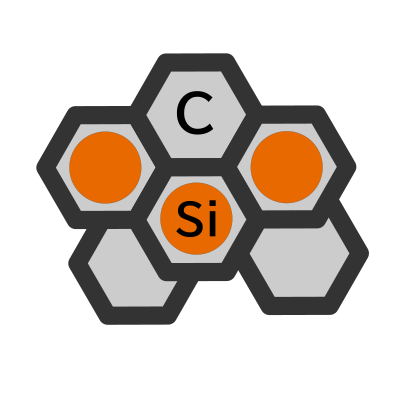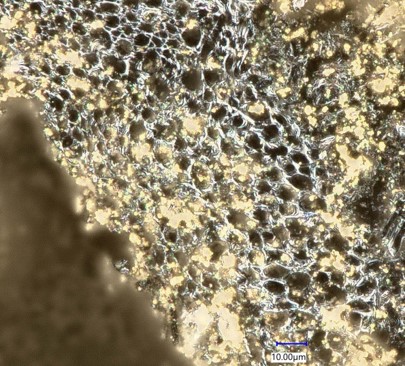Si-Embedded Porous Carbon for Negative Electrode Material of LIB
Si particles embedded in honeycomb of graphite
Si is expected to be one of the next-generation negative electrode materials of Li ion battery, because its theoretical capacity is 10 times of the conventional graphite. However, because of a large (3-times) volume expansion and shrink of Si particles during charging and discharging, the cycle performance will markedly decay.
A great deal of R&D effort in the world is paid to find a solution to this problem and to realize a Si-based LIB loadable in EV. It has been reported that a carbon-shelled Si-core morphology may show a desirable performance, because the expansion of each isolated Si particle will not affect the total morphology change of the electrode film.
We have developed a new Si & C hybrid material, which consists of porous carbon and Si particles, and Si particles are embedded in the voids of porous carbon. Because the expansion of each Si will be localized in its own void, improved cycle performance will be expected.
We produce this material only in a laboratory scale, and we have not yet a mass-production plan for producing this material. We will provide samples for further characterizations by users who are interested in the material.

